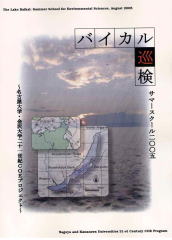Forest decline caused by forest
pests
in the Pan-Japan Sea area
Naoto Kamata, Ph. D., Associate Professor |
 |
Forests offer many valuable functions to both humanity and to nature itself. The world has lost about half of its forest cover. In addition to deforestation, vast areas are being degraded by air pollution and forest fragmentation. This forest decline is caused by natural factors as well as human activity. Natural causes include typhoons, floods, drought, pests, and fires, among others. However, there is no doubt that the main causes of deforestation and forest degradation originate in human activity. Our group have been studying forest decline caused by pests.
In Japan, pine wilt disease, caused by a pinewood nematode, and oak wilt disease (OWD), caused by an ambrosia fungus, are serious forest pests. Both causal agents are thought to be invasive and cause destructive damage to infested stands. Since the 1980s, OWD has been prevalent in many areas on the Japan Sea side of Japan. Our group monitored the occurrence and spread of OWD at three different scales: regional, local, and stand levels. Remote sensing data were used in a local-scale analysis. Spread patterns were analyzed using GIS to construct a model to predict future spread and incidence of OWD. The estimated rate of OWD spread in Ishikawa Prefecture was ca. 10 km/yr. We found that gallic acid, which is inherent in necrosis of oak trees, prevented vector insects from boring into tree trunks. We are now developing an environmentally friendly OWD control method using such biochemicals.



